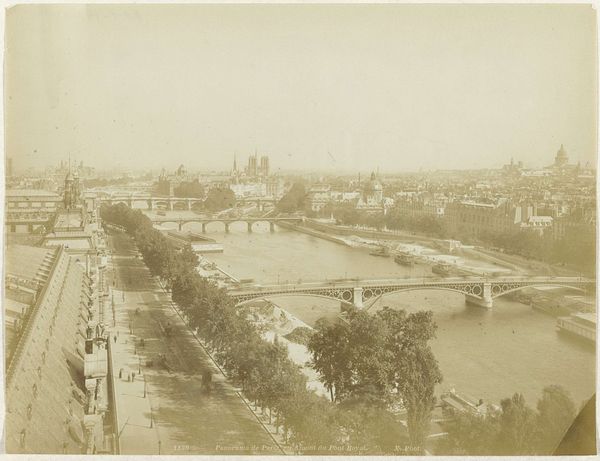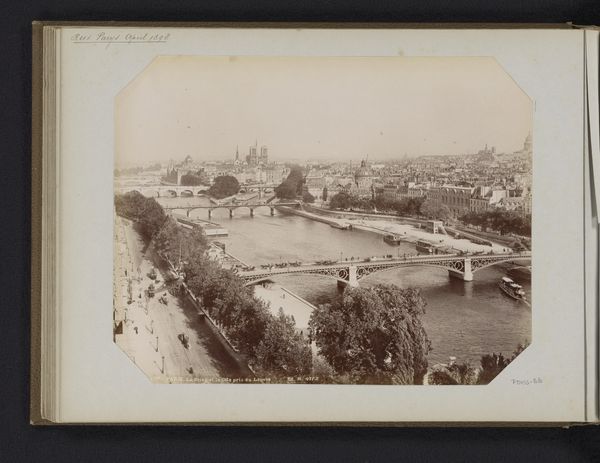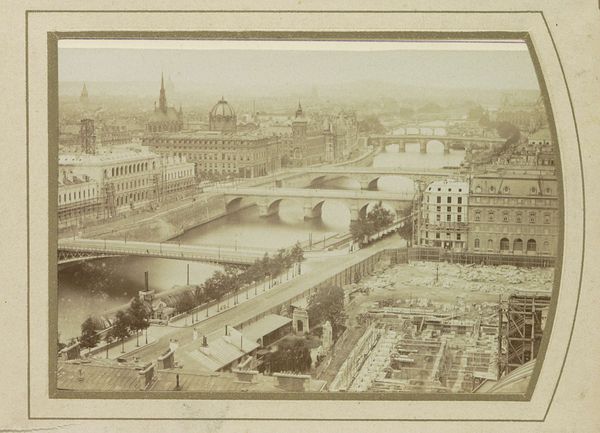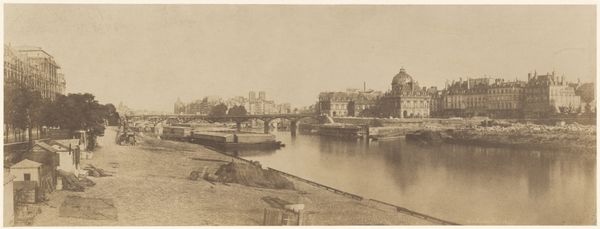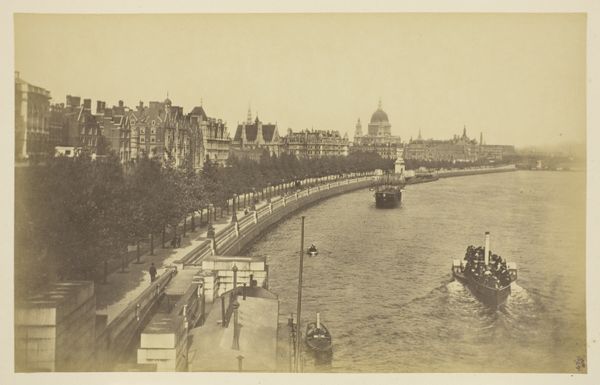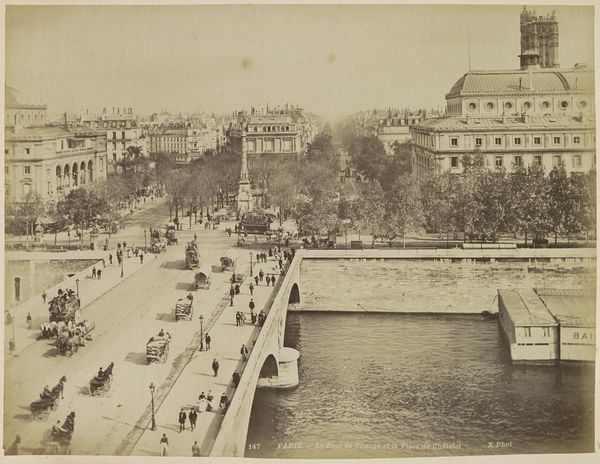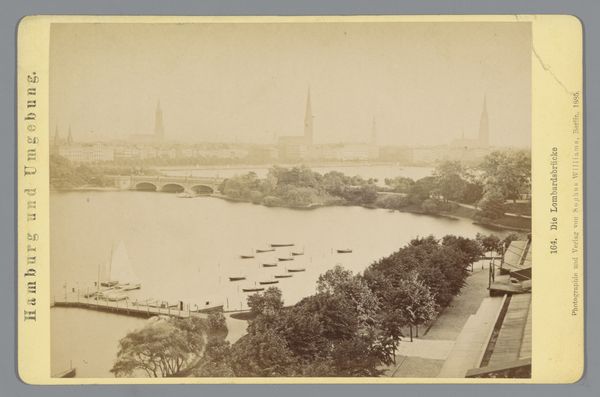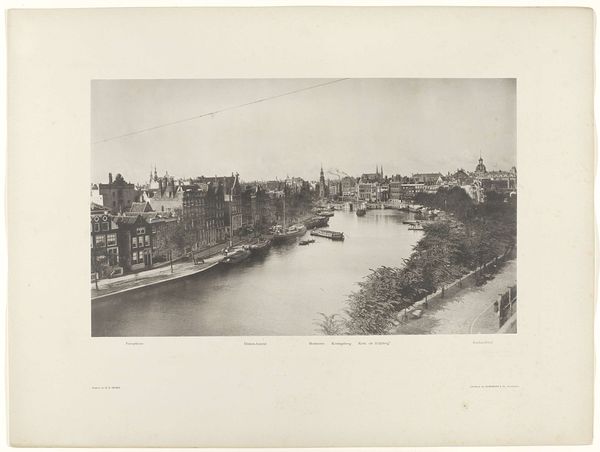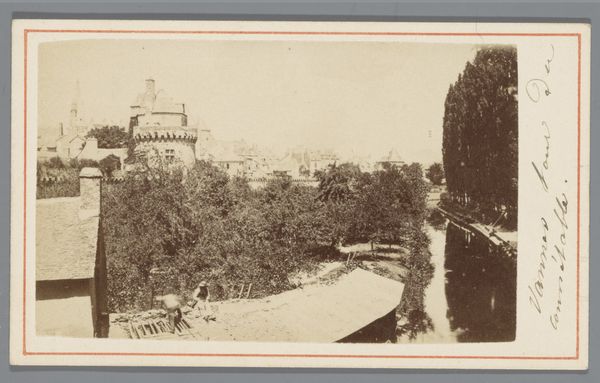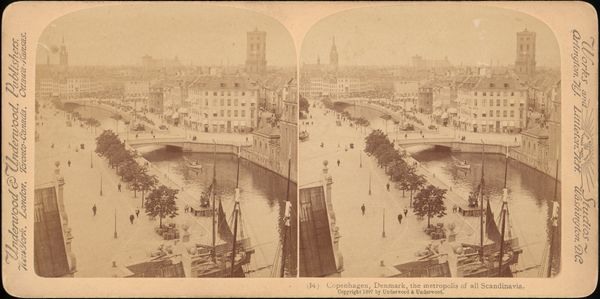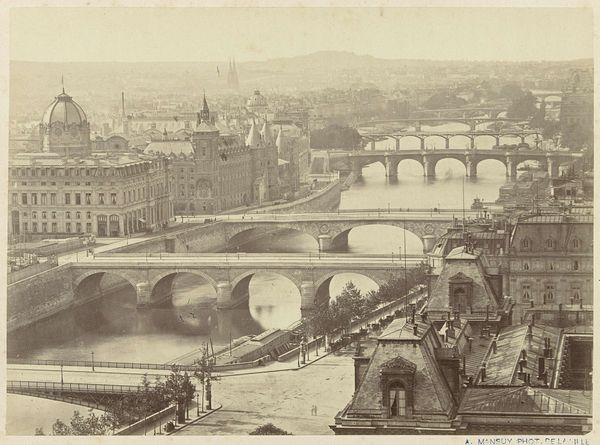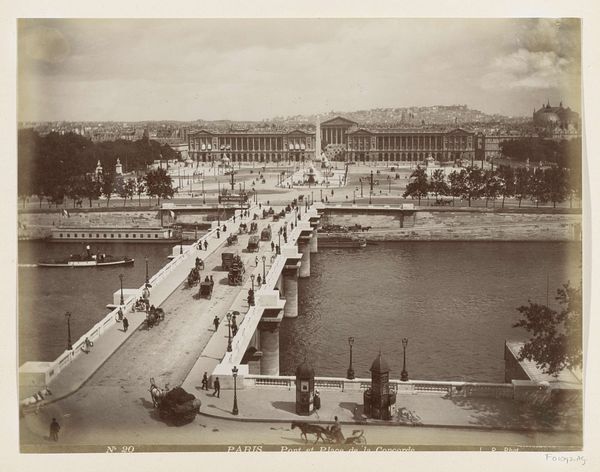
photography, gelatin-silver-print
#
natural tone
#
impressionism
#
landscape
#
river
#
photography
#
gelatin-silver-print
#
19th century
#
cityscape
Dimensions: height 120 mm, width 183 mm
Copyright: Rijks Museum: Open Domain
Curator: This photograph, a gelatin-silver print dating roughly from 1872 to 1895, offers us a "View of Paris and the Seine from the Tuileries." Editor: It has a serene, almost melancholic feel. The tonal range is so narrow; everything blends together in a way that mutes the energy of what must have been a bustling scene. Curator: Yes, and thinking about Paris at that time – recovering from the Franco-Prussian War, the rise of the Third Republic… this seemingly placid cityscape conceals a society in flux, renegotiating power. Even the choice of a high vantage point subtly implies a detached, perhaps even critical, perspective. Editor: From an iconographic perspective, water often symbolizes transition or change. The Seine, snaking through the composition, emphasizes this sense of continuous evolution. Bridges serve as transitional images and connectives that serve as links between shores but the image quality with all those tones blurring does imply an emotional removal. Curator: I’m curious about those boats moored on the river; considering the sociopolitical landscape of late 19th-century Paris, what kind of labor and commerce were conducted from these vessels? Whose stories aren't being centered? Whose work makes Parisian ideals and leisure accessible? Editor: The architecture too provides keys. Notre Dame’s presence hints at spiritual continuity amidst modernization. But I see also a tension between that traditional order, represented by its silhouette on the horizon, and the more industrial structures emerging along the riverbanks. A conflict between what was and what would become. Curator: And let's think about who might have had the ability to produce and consume this image. Photography was democratizing, but not equally. A middle-class, or perhaps upper-class, Parisian was far more likely to contemplate such a panorama. That impacts how we perceive the photograph today, as both historical document and aesthetic object that served specific audiences. Editor: Absolutely. And for the modern viewer, steeped in impressions of Paris filtered through time and cultural transmission, what does this image signify? It offers both a comforting sense of recognition and perhaps, a subtle disturbance of our expectations, revealing layers of hidden context. Curator: Layers we continue to peel back, asking critical questions about representation, access, and the very nature of Parisian identity. Editor: Indeed, symbols never exist in a vacuum. This panorama urges us to connect those visual cues to their layered meanings and discover cultural continuities.
Comments
No comments
Be the first to comment and join the conversation on the ultimate creative platform.
